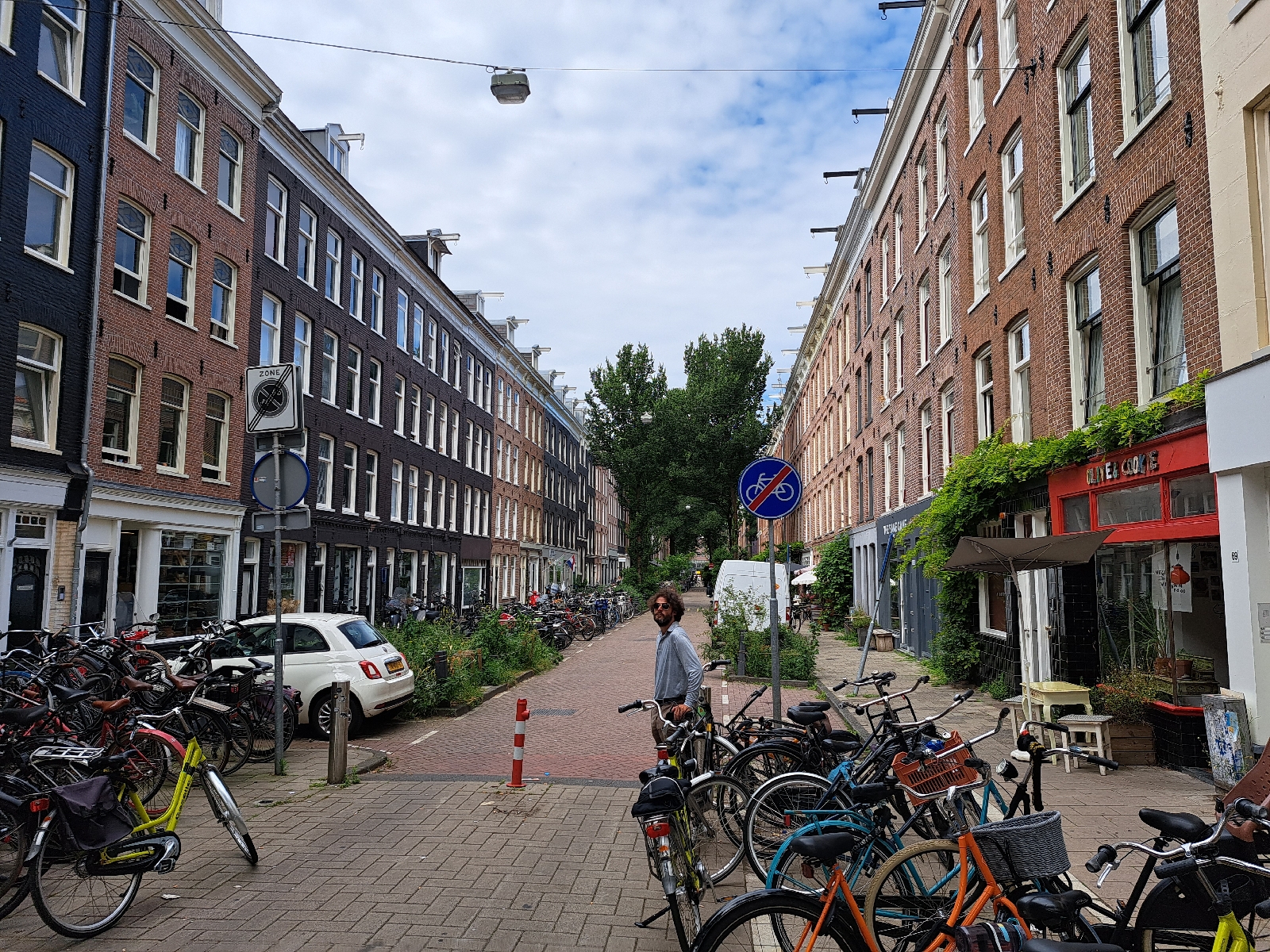PUMA (Day 25 Netherlands)
Planning for Urban Mobility and Accessibility,
aka PUMA
Dr. Meredith Glaser, Director of the Urban Cycling Institute housed at the University of Amsterdam, developed the PUMA game as a learning tool. I really enjoyed the structure of the game. It followed a basic scavenger hunt concept with the addition of varying points to make some items/activities more valuable for people who enjoy competition as a motivation. The geographic framework of PUMA uses the urban typologies of old city urban, pre-WWII suburban, and post-WWII suburban (These can be thought of city areas built before trains, old suburbs built after trains/streetcars, and new suburbs built during and after a large push to favor car travel.) The activities varied from watching (observing) to chatting with people (interviewing) to mimicking a local's daily route (experiencing).
Central city
(the poles enable moving big household things)
Pre-WWII suburb (community waste boxes are infested too!)
Post-WWII suburb (hello international mid-century modern)
We had about 24 hours from the afternoon in the park to the debrief with Meredith at the university. Mimicking a local's daily routine was out due to the time constraint. Chatting up a local teenager was out because none of us felt comfortable as random adults asking kids about where they go and what they do. (I'd drop that if I copied this game myself.) The version of PUMA we played gave more points to Post-WWII areas to encourage us to explore outside of the historic canals of the old city and beyond the old suburb area of our hostel. Plus, one of my teammates (Abby) had an interest in suburbs, so biking out to the 'burbs was in. I feel comfortable asking retail checkout folks for recommendations for things like coffee or lunch, so chatting with a local *and* going to a grocery store in each urban typology was in. The third member of my group (Nina) is an engineer and volunteered to observe and record what transportation modes people took after leaving the grocery store. We tackled a grocery store observation in each typology, then headed back to report.
Much like in the US, people in Amsterdam go to the amenities and services they need by the easiest and most enjoyable way. In Amsterdam, however, even the mid-century suburb had clusters of stores that could be walked between. It was possible to bike to grocery stores in every single area. Most people did so in both suburbs. In the densest area, most people walked. It was amazing how convenient it was to get around and take care of a basic need of acquiring food.
The PUMA game paired with Marjolein's bike tour the day before taught me that we could have such a nice life in the US. Infrastructure and policy change could enable us over time. We could do it. We can do it. It's entirely doable.
Next up: Bikes, boats, and bumbling around
Random pic: this cool cat that sauntered over for scratches








Comments
Post a Comment